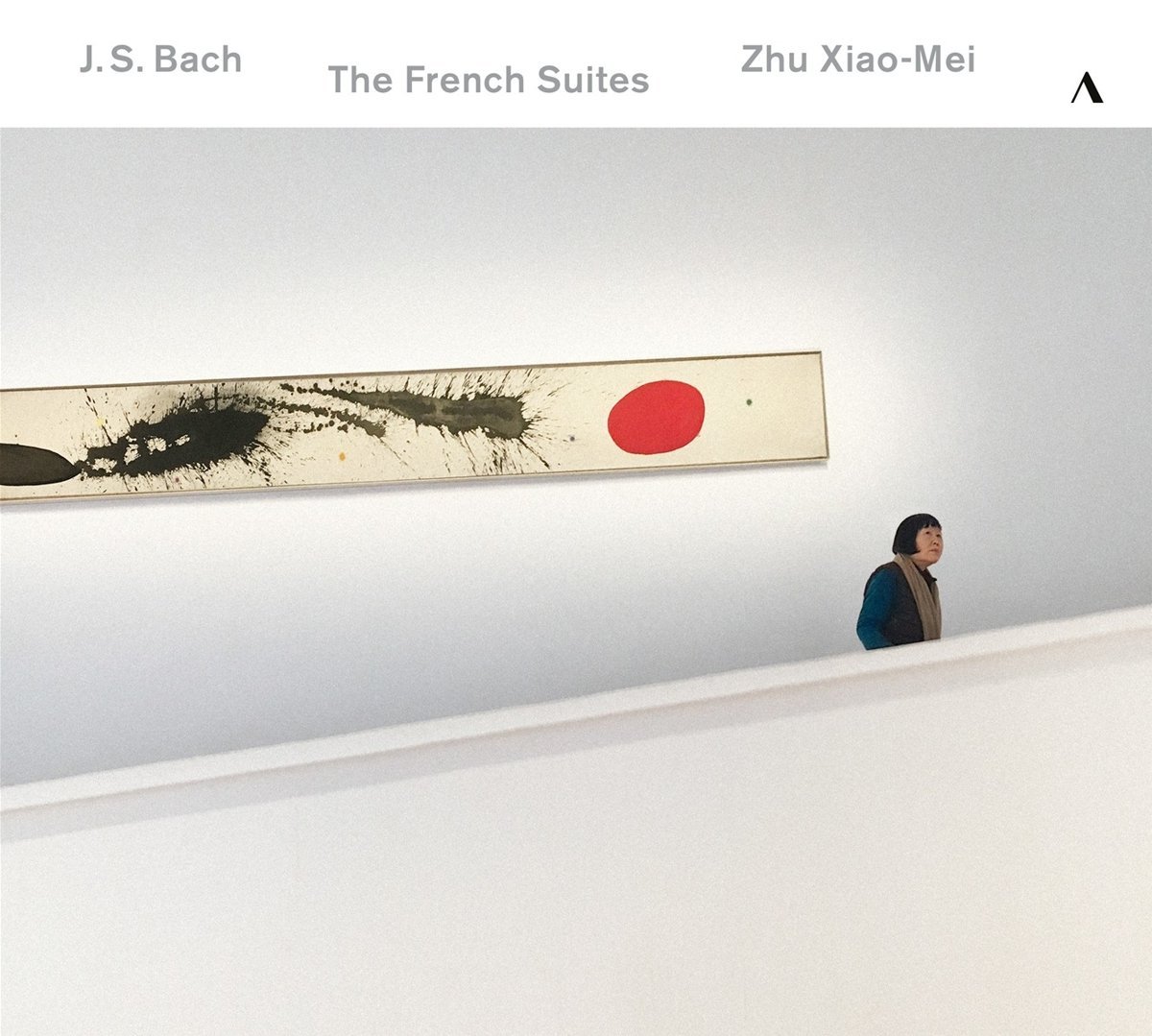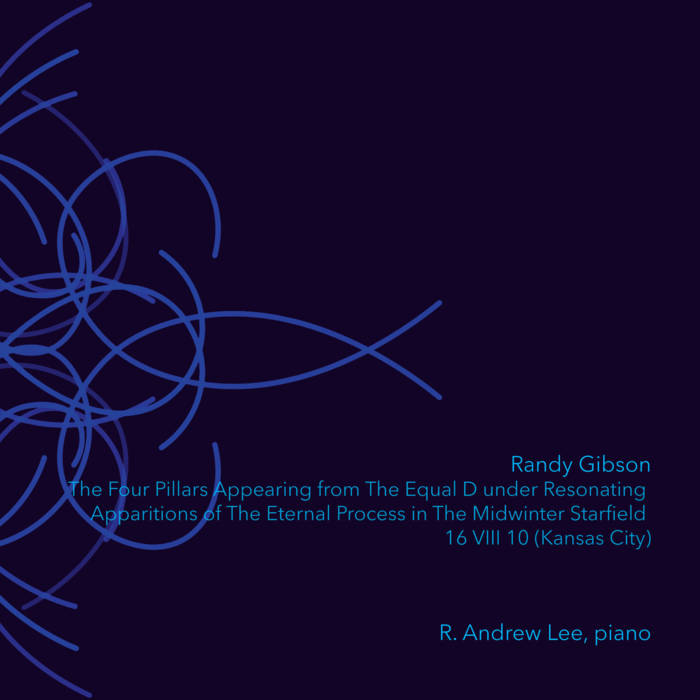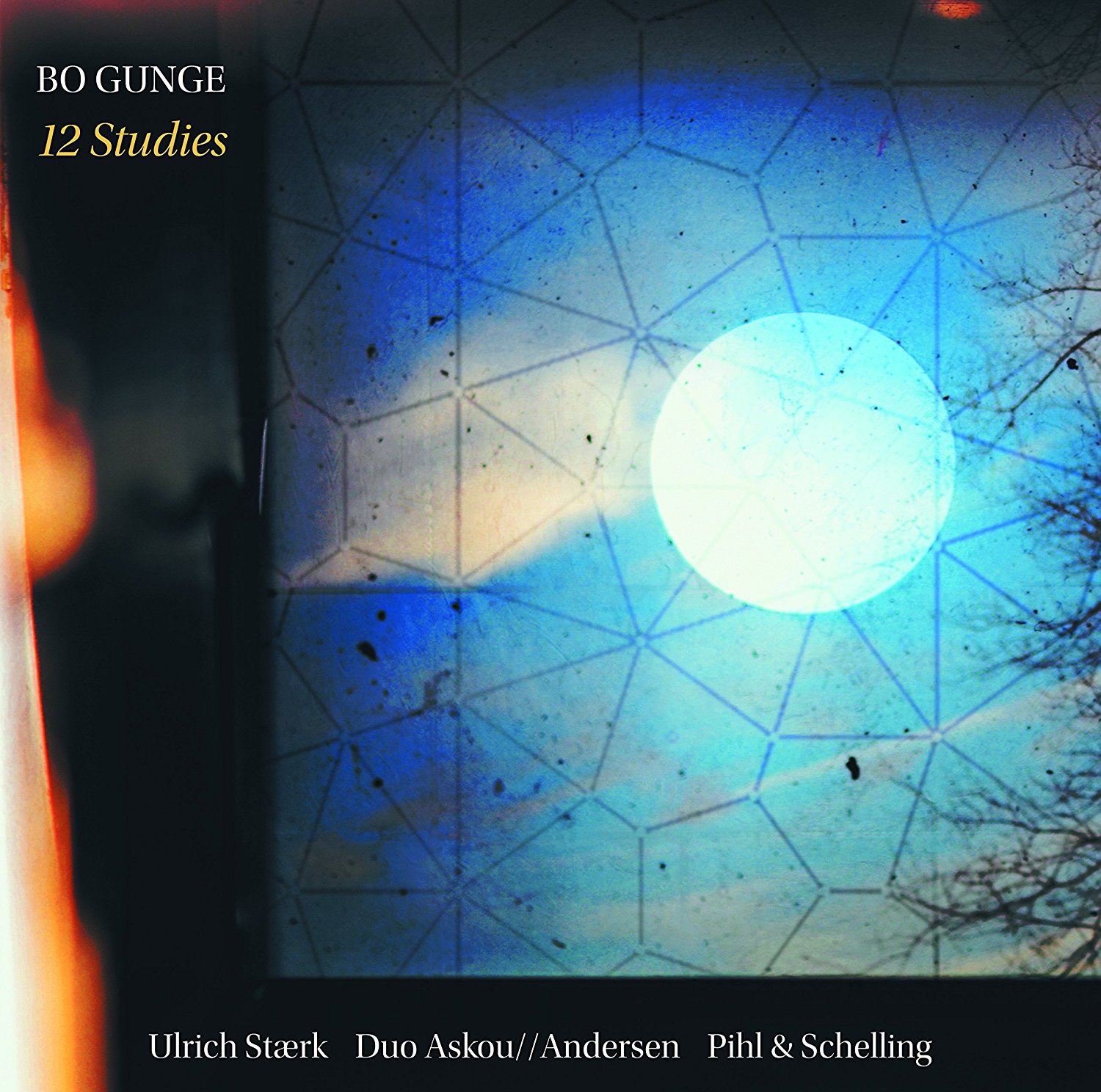Classical CDs Weekly: Bach, Gibson, Gunge | reviews, news & interviews
Classical CDs Weekly: Bach, Gibson, Gunge
Classical CDs Weekly: Bach, Gibson, Gunge
Baroque keyboard music, plus contemporary music from the US and Denmark

 Bach: French Suites Zhu Xiao-Mei (piano) (Accentus Music)
Bach: French Suites Zhu Xiao-Mei (piano) (Accentus Music)
The sheer perfection of Bach’s output can be unsettling, and faintly terrifying. So it's pleasing to find a musician who's so keen to highlight his friendlier, cuddlier side. Zhu Xiao-Mei approaches the six French Suites with palpable warmth and enthusiasm, emphasising what she sees as Bach’s childlike hope and optimism. There's a lot of light-footed, sprightly dancing here, aided by Zhu’s propensity for swiftish tempi. The slower movements unwind with serene confidence. I'm thinking of her sublime trot through Suite No. 2’s gorgeous “Allemande”: playing which compels you to stop whatever you're doing and stand still, wonderstruck. Similarly enticing is the same suite’s “Sarabande”, the gentle scalic bass line perfectly placed.
She sounds happiest in the three major key suites. The gigues charm, the rhythms delectably pointed. Just when you think things are sounding a little too comfortable, she'll deploy a sharp accent or play with the dynamics. This is irresistible Bach keyboard playing, easily up there with the likes of Perahia and Hewitt. 80 minutes of sonic bliss, attractively presented. I also sampled Accentus’s vinyl edition, lavishly spread over two LPs. Surfaces are commendably quiet and there's a pleasing depth and richness to the piano sound. Also, listening to vinyl inevitably involves more concentration: you can't get up, wander around or go into the kitchen. It's as if you're enjoying a private recital.
 Randy Gibson: The Four Pillars Appearing from The Equal D under Resonating Apparitions of The Eternal Process in The Midwinter Starfield R Andrew Lee (piano) (Irritable Hedgehog)
Randy Gibson: The Four Pillars Appearing from The Equal D under Resonating Apparitions of The Eternal Process in The Midwinter Starfield R Andrew Lee (piano) (Irritable Hedgehog)
Randy Gibson found his compositional voice when he began studying with maverick minimalist LaMonte Young in 2003. Young’s fascination with non-western music has saturated every minute of Gibson’s improbably-titled and gargantuan work (which takes around three and a half hours, spread over three discs). There's little thematic development, no hurtling towards the next cadence. Gibson's fascination with alternate tunings led to The Four Pillars’ most startling aspect. His earlier piano piece Aqua Madora required the instrument to be retuned, something which most concert venues would not agree to. Pianist R Andrew Lee casually asked Gibson for a new work, and his solution was to limit Lee to just the seven Ds on a standard keyboard, making repeat performances more likely. That's it. Over 200 minutes based on a single note. Extreme minimalism. What's not to like? Gibson’s subtle live electronics enhance what we hear – in this case, a single, unedited performance taped in Kansas City in August 2016.
Ears and brain adjust pretty quickly; what's extraordinary is how soon you start to discern different colours and in the notes. Lee confesses that he had no idea what he was getting into, initially baffled by Gibson’s description of some sections as being “melodic”. But it's bewilderingly accurate – Gibson’s overtonal tweakings can produce magical effects. The ecstatic sense of release felt when the first low register Ds kick in is difficult to express in words. Occasionally lengthy silences carry as much force as the weightier passages, with Lee’s concentration and sheer belief in the work holding everything together. And the restrained final minutes, taking us back full circle, had me grinning. Having read this far, you'll know by now whether Gibson is for you. Fans of Morton Feldman shouldn't hesitate: I can't recommend this ear-stretching artwork/piano piece enough. Packaging and production are suitably lavish, with the booklet essays a model of accessibility.
 Bo Gunge: 12 Studies Ulrich Stærk (piano) (DaCapo)
Bo Gunge: 12 Studies Ulrich Stærk (piano) (DaCapo)
Danish composer Bo Gunge’s enchanting 12 Studies are described in part as a journey through "a series of western music’s most tantalising intervals”, which had me salivating before even pressing the play button. Listen carefully and you'll notice him dwelling on major and minor thirds, or diminished fifths and flattened sevenths in the jazzier numbers. But best just to enjoy the ride, and wonder at how music deliberately notated without expressive markings (and frequently without bar lines) can communicate so vividly. Each study is performed twice: pianist Ulrich Stærk is the constant, making these miniatures gleam like tiny diamonds. Additive rhythms suggest folk music and jazz: Stærk’s winning account of “Sparkling and Blue” could be an offcut from Bartók's Mikrokosmos. “Blue but not alone” suggests an off-kilter Gershwin. These are glorious little pieces, Gunge conveying weight and airiness simultaneously.
As mentioned, each study is heard twice. This is where the disc gets better still, as each study is accompanied by alternative, instrumental versions: half for violin and accordion and the remainder for alto saxophone and harp. The results are predictably entertaining: violinist Hanne Askou and accordionist Frode Andersen’s version of “Sparkling and blue” is blissful, and the musical marriage of saxophonist Kaspar Pihl and harpist Joost Schelling generates sparks. Sample their funky take on “Cobalt blue”. Brilliantly recorded too, the production style varying from study to study but inevitably serving the music.
Share this article
The future of Arts Journalism
You can stop theartsdesk.com closing!
We urgently need financing to survive. Our fundraising drive has thus far raised £49,000 but we need to reach £100,000 or we will be forced to close. Please contribute here: https://gofund.me/c3f6033d
And if you can forward this information to anyone who might assist, we’d be grateful.

Subscribe to theartsdesk.com
Thank you for continuing to read our work on theartsdesk.com. For unlimited access to every article in its entirety, including our archive of more than 15,000 pieces, we're asking for £5 per month or £40 per year. We feel it's a very good deal, and hope you do too.
To take a subscription now simply click here.
And if you're looking for that extra gift for a friend or family member, why not treat them to a theartsdesk.com gift subscription?
more Classical music
 Monteverdi Choir, ORR, Heras-Casado, St Martin-in-the-Fields review - flames of joy and sorrow
First-rate soloists, choir and orchestra unite in a blazing Mozart Requiem
Monteverdi Choir, ORR, Heras-Casado, St Martin-in-the-Fields review - flames of joy and sorrow
First-rate soloists, choir and orchestra unite in a blazing Mozart Requiem
 Cho, LSO, Pappano, Barbican review - finely-focused stormy weather
Chameleonic Seong-Jin Cho is a match for the fine-tuning of the LSO’s Chief Conductor
Cho, LSO, Pappano, Barbican review - finely-focused stormy weather
Chameleonic Seong-Jin Cho is a match for the fine-tuning of the LSO’s Chief Conductor
 Classical CDs: Shrouds, silhouettes and superstition
Cello concertos, choral collections and a stunning tribute to a contemporary giant
Classical CDs: Shrouds, silhouettes and superstition
Cello concertos, choral collections and a stunning tribute to a contemporary giant
 Appl, Levickis, Wigmore Hall review - fun to the fore in cabaret and show songs
A relaxed evening of light-hearted fare, with the accordion offering unusual colours
Appl, Levickis, Wigmore Hall review - fun to the fore in cabaret and show songs
A relaxed evening of light-hearted fare, with the accordion offering unusual colours
 Lammermuir Festival 2025, Part 2 review - from the soaringly sublime to the zoologically ridiculous
Bigger than ever, and the quality remains astonishingly high
Lammermuir Festival 2025, Part 2 review - from the soaringly sublime to the zoologically ridiculous
Bigger than ever, and the quality remains astonishingly high
 BBC Proms: Ehnes, Sinfonia of London, Wilson review - aspects of love
Sensuous Ravel, and bittersweet Bernstein, on an amorous evening
BBC Proms: Ehnes, Sinfonia of London, Wilson review - aspects of love
Sensuous Ravel, and bittersweet Bernstein, on an amorous evening
 Presteigne Festival 2025 review - new music is centre stage in the Welsh Marches
Music by 30 living composers, with Eleanor Alberga topping the bill
Presteigne Festival 2025 review - new music is centre stage in the Welsh Marches
Music by 30 living composers, with Eleanor Alberga topping the bill
 Lammermuir Festival 2025 review - music with soul from the heart of East Lothian
Baroque splendour, and chamber-ensemble drama, amid history-haunted lands
Lammermuir Festival 2025 review - music with soul from the heart of East Lothian
Baroque splendour, and chamber-ensemble drama, amid history-haunted lands
 BBC Proms: Steinbacher, RPO, Petrenko / Sternath, BBCSO, Oramo review - double-bill mixed bag
Young pianist shines in Grieg but Bliss’s portentous cantata disappoints
BBC Proms: Steinbacher, RPO, Petrenko / Sternath, BBCSO, Oramo review - double-bill mixed bag
Young pianist shines in Grieg but Bliss’s portentous cantata disappoints
 theartsdesk at the Lahti Sibelius Festival - early epics by the Finnish master in context
Finnish heroes meet their Austro-German counterparts in breathtaking interpretations
theartsdesk at the Lahti Sibelius Festival - early epics by the Finnish master in context
Finnish heroes meet their Austro-German counterparts in breathtaking interpretations
 Classical CDs: Sleigh rides, pancakes and cigars
Two big boxes, plus new music for brass and a pair of clarinet concertos
Classical CDs: Sleigh rides, pancakes and cigars
Two big boxes, plus new music for brass and a pair of clarinet concertos
 Waley-Cohen, Manchester Camerata, Pether, Whitworth Art Gallery, Manchester review - premiere of no ordinary violin concerto
Images of maternal care inspired by Hepworth and played in a gallery setting
Waley-Cohen, Manchester Camerata, Pether, Whitworth Art Gallery, Manchester review - premiere of no ordinary violin concerto
Images of maternal care inspired by Hepworth and played in a gallery setting

Add comment